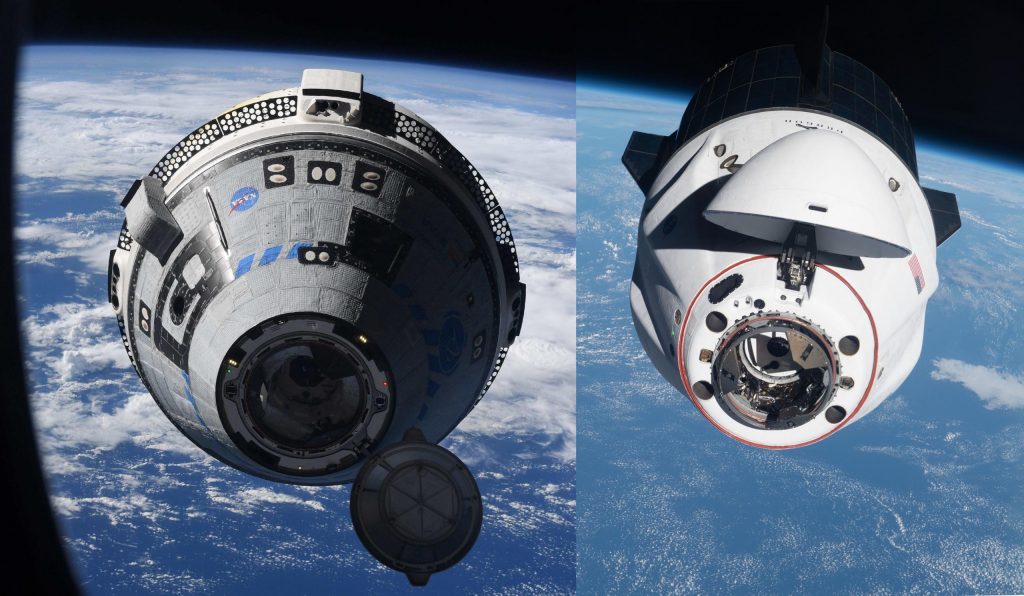Boeing’s Starliner crew capsule has successfully rendezvoused, approached, and docked with the International Space Station for the first time, marking major several major milestones for NASA and its second Commercial Crew partner.
Starliner’s second orbital flight test (OFT-2) began as expected with a near-flawless May 19th launch on a United Launch Alliance (ULA) Atlas V rocket. As thousands of employees and stakeholders held their collective breath, the uncrewed prototype safely detached from Atlas V’s Centaur upper stage and propelled itself the rest of the to a stable parking orbit. Two and a half years after their first attempt, Boeing and NASA were then finally able to send Starliner on its way to the International Space Station (ISS) and prepare for proximity operations.
Welcome #Starliner ! pic.twitter.com/F7KVIRO24c
— Samantha Cristoforetti (@AstroSamantha) May 21, 2022
As previously discussed on Teslarati, Starliner making it through the first hour or so of flight without running into a catastrophic problem was already a huge milestone for Boeing and a massive improvement over the company’s last two orbital flight test attempts.
“The story of Starliner’s tortured orbital flight test (OFT) campaign began in earnest on December 20th, 2019, when an uncrewed prototype first attempted to launch to the International Space Station (ISS) atop a United Launch Alliance (ULA) Atlas V rocket. A major software bug that could have been easily detected with even the most basic integrated hardware-in-the-loop prelaunch testing caused Starliner to lose control the moment it separated from Atlas V. After hundreds of seconds of unplanned burns of its many attitude control thrusters, Boeing finally regained control but Starliner no longer had enough propellant to safely reach the ISS.
Boeing would later catch and correct another unrelated software bug mere hours before Starliner’s planned reentry and recovery that, if undetected, could have caused the spacecraft’s capsule and service sections to crash into each other shortly after separation.
On July 30th, 2021, shortly before a different uncrewed Starliner was scheduled to reattempt the first Orbital Flight Test, the launch was aborted. Boeing and NASA later reported that 13 of Starliner’s 24 main oxidizer valves failed to open during a prelaunch test just a few hours before liftoff. It was eventually concluded that faulty Aerojet Rocketdyne-supplied valves and poor Boeing integration enabled water intrusion and extensive corrosion. The next OFT-2 launch attempt was delayed by almost ten months, as a result.”
Teslarati.com – May 19th, 2022
Instead of calamity, Starliner’s second OFT and third OFT attempt was mainly greeted with success. After reaching orbit, the spacecraft began raising and ‘phasing’ its orbit to rendezvous with the ISS and completed all the burns and navigation required without major issues. Finally, after several intentional test maneuvers and about an hour of unplanned troubleshooting, Starliner began its final approach and successfully docked with the ISS – joining a SpaceX Crew Dragon – at 8:28 pm EDT on May 20th (00:28 UTC 21 May).
Starliner’s successful docking made it the fourth, fifth, or sixth US spacecraft to reach the ISS, joining the Space Shuttle, three main variants of SpaceX’s Dragon, and Orbital ATK’s (now Northrop Grumman) Cygnus cargo vehicle. It also marked the first time that both NASA Commercial Crew Program vehicles have been simultaneously docked at the space station – a reassuring sign of a future with redundant access after years of Boeing delays forced SpaceX to temporarily become NASA’s sole source of astronaut transportation. While odds are good that SpaceX will ultimately be required to singlehandedly maintain NASA access to the ISS for seven six-month ‘expeditions’ (>3 years), Starliner’s thus-far-successful OFT2 mission significantly improves the odds that the Boeing spacecraft will be fully ready within a year or two.
Nonetheless, Starliner must still safely depart the ISS, lower its orbit, reenter Earth’s atmosphere, and safely touch down for recovery and reuse. Starliner has already accomplished all of those tasks during OFT1, but tensions will still be high. Additionally, Starliner’s performance during OFT2 has been far from perfect. Aside from a few minor issues with coolers and radiators, Boeing and NASA revealed that four of the spacecraft’s several dozen thrusters (two larger maneuvering/control thrusters and two smaller attitude control thrusters) – had failed by the time it was docked. During OFT1, as many as 13 thrusters failed as a result of minutes of unplanned burns, but Boeing was able to recover all but one before reentry.
Technically, that means that both missions have demonstrated the solid redundancy of Starliner’s propulsion systems, but NASA will undoubtedly demand that Boeing determine probable root causes and qualify fixes before greenlighting Starliner’s first Crewed Flight Test (CFT). For SpaceX, it took 14 months after Crew Dragon’s first near-flawless uncrewed debut for NASA to agree to proceed with a crewed flight test. However, during post-flight testing, the capsule that support Demo-1 catastrophically exploded, triggering a several-month investigation. The effect of a few failed thrusters is decidedly less severe, so Starliner might not have to wait as long for CFT. With any luck, that means that NASA will have two fully-redundant astronaut transport spacecraft available and operational by the end of 2023, if not earlier.

